In this Issue:
- Incredible 2015 Year End Promotions Available NOW!
- Can STB help with our “in-house” testing solution?
- v9.2 Available Now!
- Ask Dr. SCSI – What’s the history of “Dr. SCSI” and what about Oct 21, 2015?
- Using BAM in your programs
- What is Performa?
STB Suite 2015 End of Year Offers!
 This year we’re offering not one, not two, but three incredible offers
This year we’re offering not one, not two, but three incredible offers
Typically we offer an End-of-Year promotion that runs through the last month of the year. But inevitably we hear, “I need more than 30 days to place an order” or we get an email come January or February, “You know that offer you ran in December? Can I get that offer now?”. 2015 is your year! We’re not only offering some great promotions early (Mid Oct is early!) but we’re giving you three great options to choose from.
- Buy One STB Suite license and receive one 1/2 off! ($2,497.50 Savings!)
- Purchase, Renew/Extend your Performa coverage and save $100!
- If your Performa coverage is Active you can purchase a new license and save $500!
Remember these offers are only valid until 12/31/2015 so DON’T WAIT!
Click here to get the Details and receive your Discount Coupons on our website here!
Can STB help with our “in-house” testing solution?
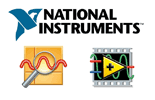 STB Can Always Help!
STB Can Always Help!
For well over two decades the team at STB has been improving the incredible test tools that comprise what we call the STB Suite today!
The STB Suite tools are comprised of virtually every test tool you’ll need to accomplish your peripheral testing.
Engineering tools, Burn-In, ORT, MFG Screening, Compliance and more! The testing can be accomplished in a variety of ways also GUI setup, API’s, BUS Analysis, etc.
What happens if you’ve been using some in-house tools or a testing solution and for some reason you need to change? Maybe, someone has been developing the tests/tools internally for years and they’re no longer a viable option to maintain, change or improve those tests?
Recently we had a customer ask if we worked with National Instruments LabVIEW. We had reports of other customers using LabVIEW in the past with the STB Suite (in particular the Developer Toolbox API) but we hadn’t used it in-house at STB. So with a couple of on-site visits and technical support the Developer’s ToolBox (DTB), which is a set of APIs that are callable from other applications, was successfully imported into LabVIEW. In other words, if you have a LabVIEW application, and you need to issue I/O to a device (for example get Inquiry information from a drive, or read Log Pages), you can import our DTB into your LabVIEW application and call the API in DTB!
Once we verified that the APIs in our library was accessible from his LabVIEW application, anything is possible with the DTB library, including reading and writing from drives, to retrieving Log Page and Mode Sense data, to retrieving SMART data and IDENTIFY data from SATA drives, the sky is the limit!
So maybe you’re using LabVIEW another 3rd party test or automation system or maybe you’re using something that was written in-house, the simple fact is the STB Suite can be used to help improve, simplify and streamline your testing.
Contact STB today to find out how we can help improve your testing today!
Announcing v9.2 for the STB Suite – Just Released!
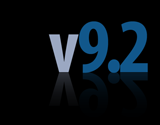 It’s here! Version 9.2 of the STB Suite has been released.
It’s here! Version 9.2 of the STB Suite has been released.
In version 9.2 we added improvements to the installation, original mode changes, and added new features. Also in v9.2 there were DMM changes, new test features that include enhanced Database logging. Also, some minor changes to the Tape Manufacturing Module (TMM) were made. AME now has a GUI option that will display the test status, drives under test with error notifications and the ability to execute all Pre-Test and Post-Test Actions via the defined .seq file. Lastly, the Developer Toolbox API (DTB) had some changes made as well as seven new features.
If you’re an active Performa customer you should have already received your 9.2 Performa email. If you have not received your email or would, would like to renew your coverage, or are interested in purchasing a new license please contact sales.
Read the Full v9.2 STB Suite Release notes here with screenshots!
Ask Dr. SCSI – What’s the history of “Dr. SCSI” and what about Oct 21, 2015?
 Q: “Where did “Dr. SCSI” come from and what is significant about Oct 21, 2015?”
Q: “Where did “Dr. SCSI” come from and what is significant about Oct 21, 2015?”
A: “To try to make a long story short…”
Our original, first generation SCSI tester product was being developed in the late 1980’s, as a “midnight engineering” project. We needed such a tester for my main disk drive distribution company, but that business kept us so busy we had to develop the tool a night, after normal hours.
Here’s an early prototype –
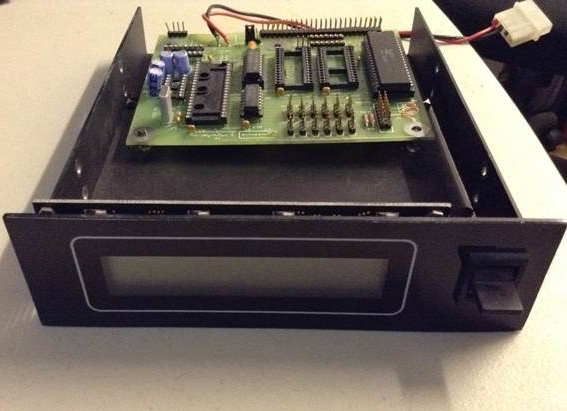
Sidebar: One of our first software products in the early 1980s was a customer/tape management product to computerize video tape rental stores – anyone remember those? Because of that we had a huge supply of movies on video tape, and something was always playing in the background while we worked.
Because we had several irons in the fire we needed a name for this SCSI tester product. One evening “Back to the Future” was playing in the background and I happened to be between thoughts when at the end of the movie Doc comes back to the future to pick up Marty to go into the future (Oct 21, 2015 to be precise). To refuel the time machine he dumped some garbage in the new “Mr. Fusion” power supply.
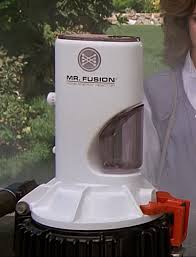
“Mr. Fusion”. For some reason that really tickled me.
Mr. Fusion.
Mr. Fusion…
Click! How about “Mr. SCSI”? The thought just snapped into place, one of those Eureka! moments.
Our tester had an internal name. Its officially marked name became the STM-100 –
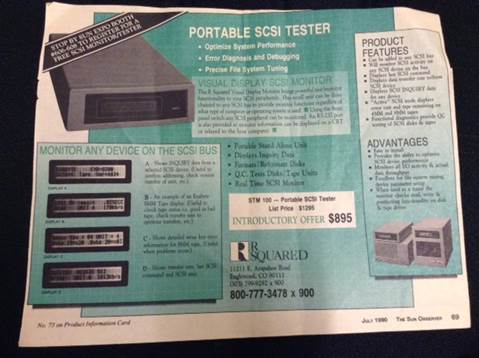
Fast forward a few years. The hardware based Mr. SCSI tester had proven quite useful in our disk drive business. And as the ad shows we even sold it to other disk drive companies for testing and prepping drives.
But as with all hardware based products we had reached the end of what our original design could do.
So we decided to convert to a software based tester. In 2002 we left the disk drive distribution business and started a new company to do nothing but computer peripheral test and diagnostic tools – software tools this time.
This gave us so much more flexibility and power, we could adapt the product as technology evolved – it was just better all around. It was a much “smarter” solution.
So what should the smarter sibling or descendant of Mr. SCSI be known as?
That’s right – he was known as “Dr. SCSI”.
Dr. SCSI went on to have a car and a newsletter column.
Find out what was significant about Oct 21, 2015 and read conclusion of the short story!
Using BAM in your programs
Introduction
BAM – the Bus Analyzer Module (included with the STB Suite) – is a piece of the STB Suite that is used daily by our in-house development programmers. It is so useful, to verify our programs as we write them, to watch that the proper command is being sent, the expected data is being returned, etc. The interactive, gui-based BAM is super useful!
Using BAM in a program
But there is a whole other “version” of BAM available for programmers who are writing their own programs, tests, or utilities. This consists of the BAM function calls in the Developers Toolbox (DTB) api.
Functions are available to completely control BAM programmatically. You can select the device(s) to monitor, the phases to capture, start and stop traces – all from within your programs.
Here are a few examples of what is possible –
- Start a BAM capture when any event occurs – on a drive error, when a certain command is executed. Any time you need to capture I/O you can.
- Stop the BAM capture when an event occurs. You can start the BAM trace, then stop it and save the trace when an event occurs. Have BAM running, stop and save the trace when an error occurs – now you have a record of all of the I/O leading up to the error.
- Put in an option to help you troubleshoot your users problems. If you are writing a utility or test you can put in a user option to grab a trace, save it, send it back in a report, etc.
An example –
Here is a simple example of how to use the BAM api functions, taken from the DTB reference documentation:
Appendix C – Using BAM from a Program
Introduction
Beginning in the STB Suite version 8.1 the Developers Toolbox (DTB) api includes functions to use the Bus Analyzer Module (BAM) from within an application program.
This article will describe the DTB functions used to control BAM and show an example of a simple program to capture a trace and save it to a file.
The BAM-specific DTB functions
The DTB api calls to control BAM are as follows:
int VCSCSIBAMconfigure(long BufSize, long PhaseSize, int Flags, int Phases);
int VCSCSIBAMclearBuffer();
int VCSCSIBAMdrive(int ha, int target, int lun, int capture);
int VCSCSIBAMstartCapture();
int VCSCSIBAMstopCapture();
enum _BAM_FILE_TYPES {eBAMFileRaw, eBAMFileExcel };
typedef enum _BAM_FILE_TYPES eBAM_FILE_TYPES;
int VCSCSIBAMsaveCapture(BYTE *fname,eBAM_FILE_TYPES eSaveType);
In short these functions are used to define the device which you wish to capture bus traffic to/from, which BAM phases you wish to capture, the size of your capture buffer, and flags such as STOP_ON_BUFFER_FULL to control trace capture behavior.
Once a capture session as been defined it is a simple matter to call one function to start the capture, another function to stop the capture, and finally a function to save the capture data to either raw BAM type data or to an Excel-type (comma delimited) text file.
A programming example
The following code snip shows how to control a complete BAM capture session via DTB:
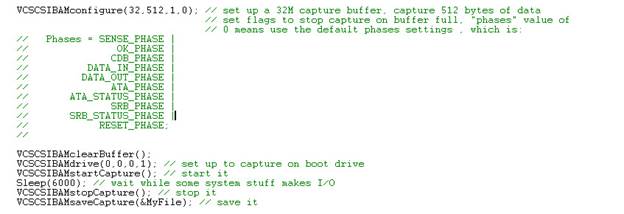
Summary
Capturing BAM trace data for any device on your test system is simply a matter of a few basic DTB function calls. If you are interested in using BAM in your own programs we encourage you to look here at the DTB documentation –
And to feel free to contact us to discuss BAM, the BAM DTB api, or any other part of the STB Suite. Live training and support is part of your Performa coverage – we’d be happy to tailor an online meeting to help you accomplish your goals.
You can contact us online: Request Online Meeting or call 720-249-2641 to set up a meeting.
What is Performa?
 Performa is the STB Suite annual support and maintenance plan.
Performa is the STB Suite annual support and maintenance plan.
In most cases each purchase of the STB Suite includes 12 months of Performa coverage.
What does that coverage include?
- Updates to the STB Suite
- There are typically two major updates to the STB Suite per year. In between these major updates there are typically a number of maintenance updates which will be used to fix bugs and occasionally introduce new features.With Performa coverage you are entitled to all of these. STB v9.2 has just been released!
- Product Support
- Performa coverage provides you with contact with our development team, to answer questions, discuss changes or improvements, etc. With decades of storage experience our support team is willing and able to help you.Our World-class support typically responds to email support issues within one hour!
- New License discounts
- SCSI Toolbox now offers attractive discounts on new licenses when you keep your licenses covered by the Performa program.
- 1-3 licenses actively covered you’ll receive an additional* 10% Performa Discount on New licenses.
- SCSI Toolbox now offers attractive discounts on new licenses when you keep your licenses covered by the Performa program.
